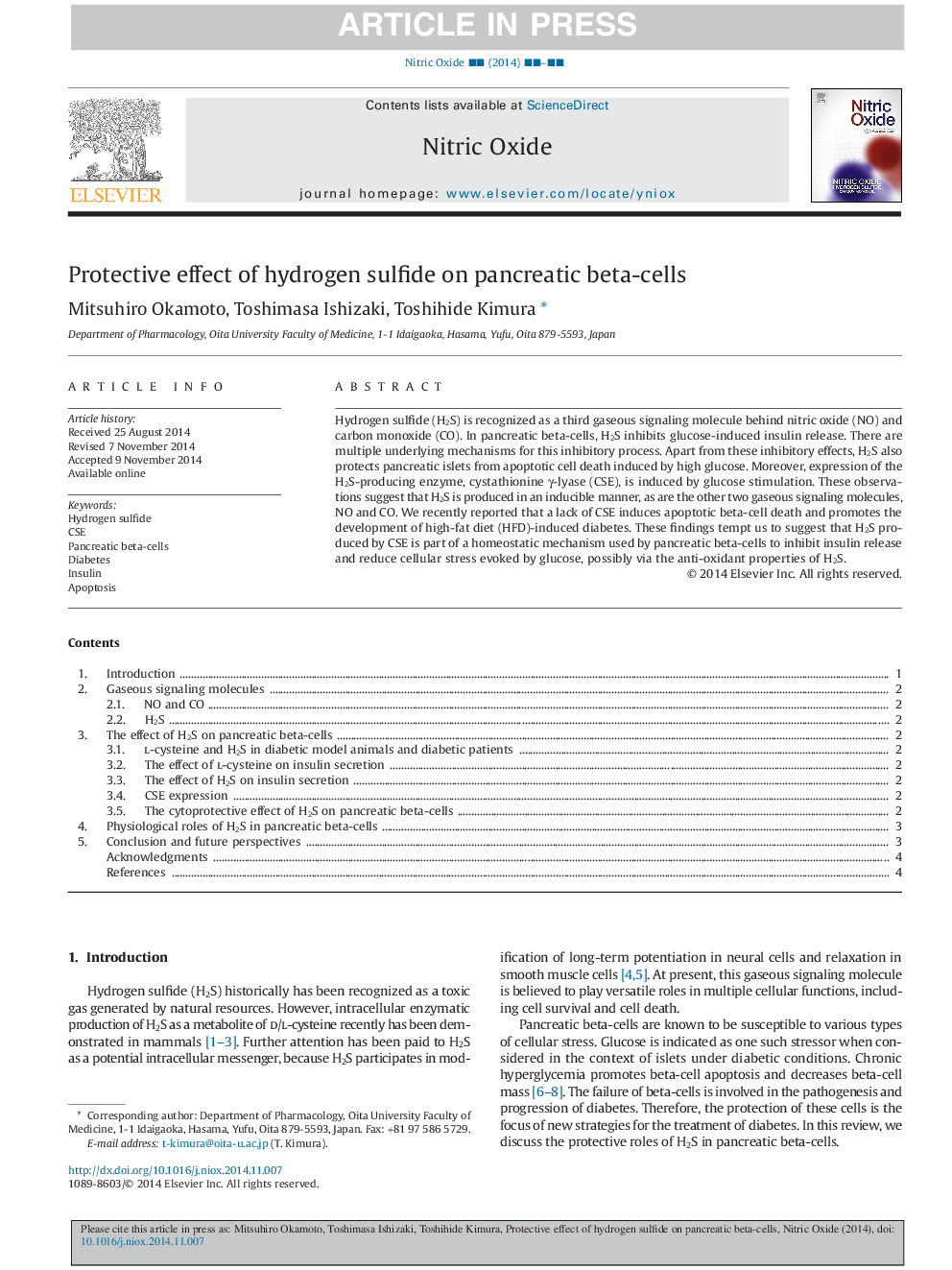| کد مقاله | کد نشریه | سال انتشار | مقاله انگلیسی | نسخه تمام متن |
|---|---|---|---|---|
| 8345134 | 1541613 | 2015 | 5 صفحه PDF | دانلود رایگان |
عنوان انگلیسی مقاله ISI
Protective effect of hydrogen sulfide on pancreatic beta-cells
ترجمه فارسی عنوان
اثر حفاظتی سولفید هیدروژن بر سلول های بتای پانکراس
دانلود مقاله + سفارش ترجمه
دانلود مقاله ISI انگلیسی
رایگان برای ایرانیان
کلمات کلیدی
موضوعات مرتبط
علوم زیستی و بیوفناوری
بیوشیمی، ژنتیک و زیست شناسی مولکولی
زیست شیمی
چکیده انگلیسی
Hydrogen sulfide (H2S) is recognized as a third gaseous signaling molecule behind nitric oxide (NO) and carbon monoxide (CO). In pancreatic beta-cells, H2S inhibits glucose-induced insulin release. There are multiple underlying mechanisms for this inhibitory process. Apart from these inhibitory effects, H2S also protects pancreatic islets from apoptotic cell death induced by high glucose. Moreover, expression of the H2S-producing enzyme, cystathionine γ-lyase (CSE), is induced by glucose stimulation. These observations suggest that H2S is produced in an inducible manner, as are the other two gaseous signaling molecules, NO and CO. We recently reported that a lack of CSE induces apoptotic beta-cell death and promotes the development of high-fat diet (HFD)-induced diabetes. These findings tempt us to suggest that H2S produced by CSE is part of a homeostatic mechanism used by pancreatic beta-cells to inhibit insulin release and reduce cellular stress evoked by glucose, possibly via the anti-oxidant properties of H2S.
ناشر
Database: Elsevier - ScienceDirect (ساینس دایرکت)
Journal: Nitric Oxide - Volume 46, 30 April 2015, Pages 32-36
Journal: Nitric Oxide - Volume 46, 30 April 2015, Pages 32-36
نویسندگان
Mitsuhiro Okamoto, Toshimasa Ishizaki, Toshihide Kimura,
